The shaggy parasol mushroom (Chlorophyllum rhacodes) is a delicious wild mushroom you should know. An intermediate-level mushroom for foragers, these require a little extra time to understand and identify. Long enjoyed in Europe, they're known as Mazze de Tamburo (drum sticks) in Italian.
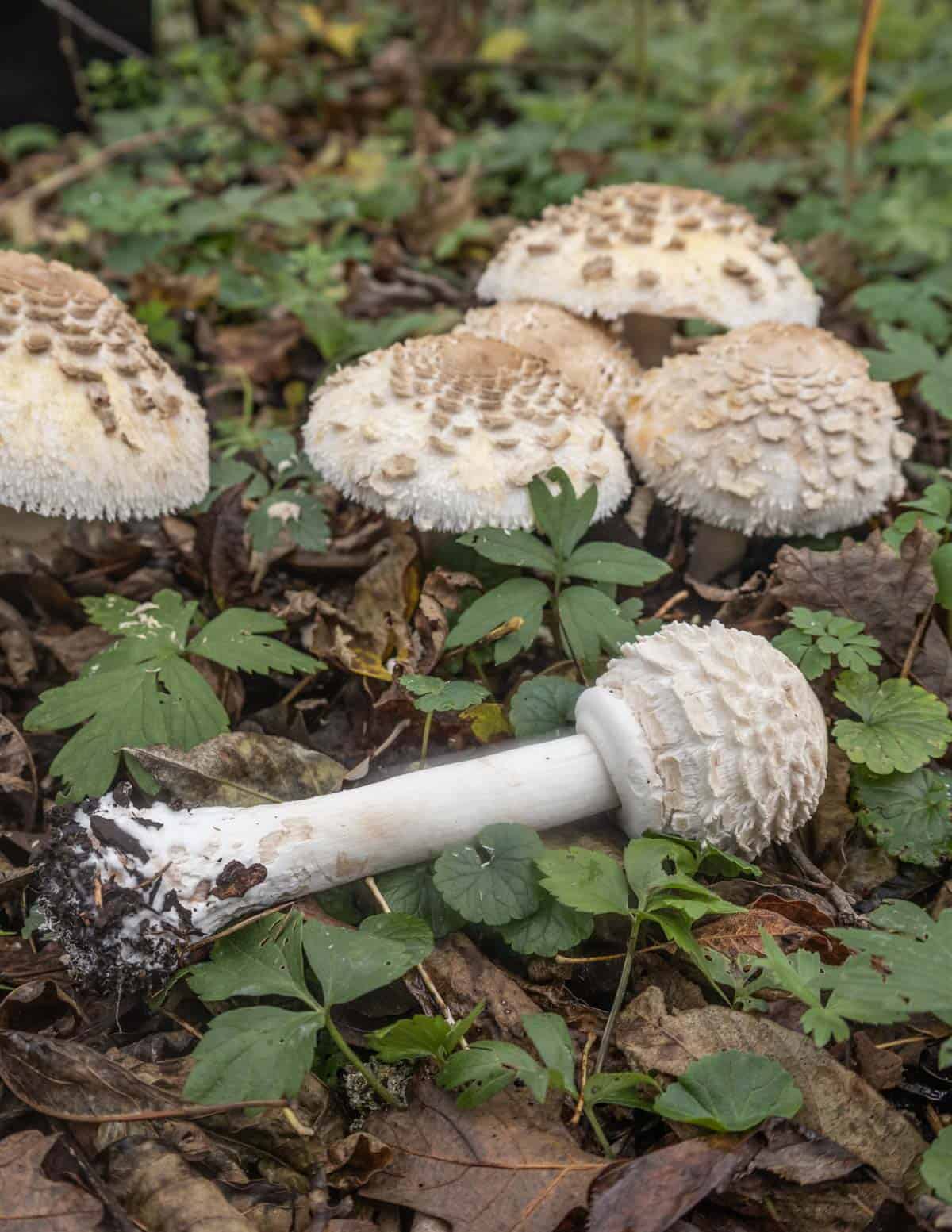
Parasols have been eluding me for a while. One day in the fall I got a picture message from my boss's wife with a question I get often: "what is this mushroom, and can I eat it?". 99% of the time the answer is no, but this picture was of a mushroom I had studied long and hard.
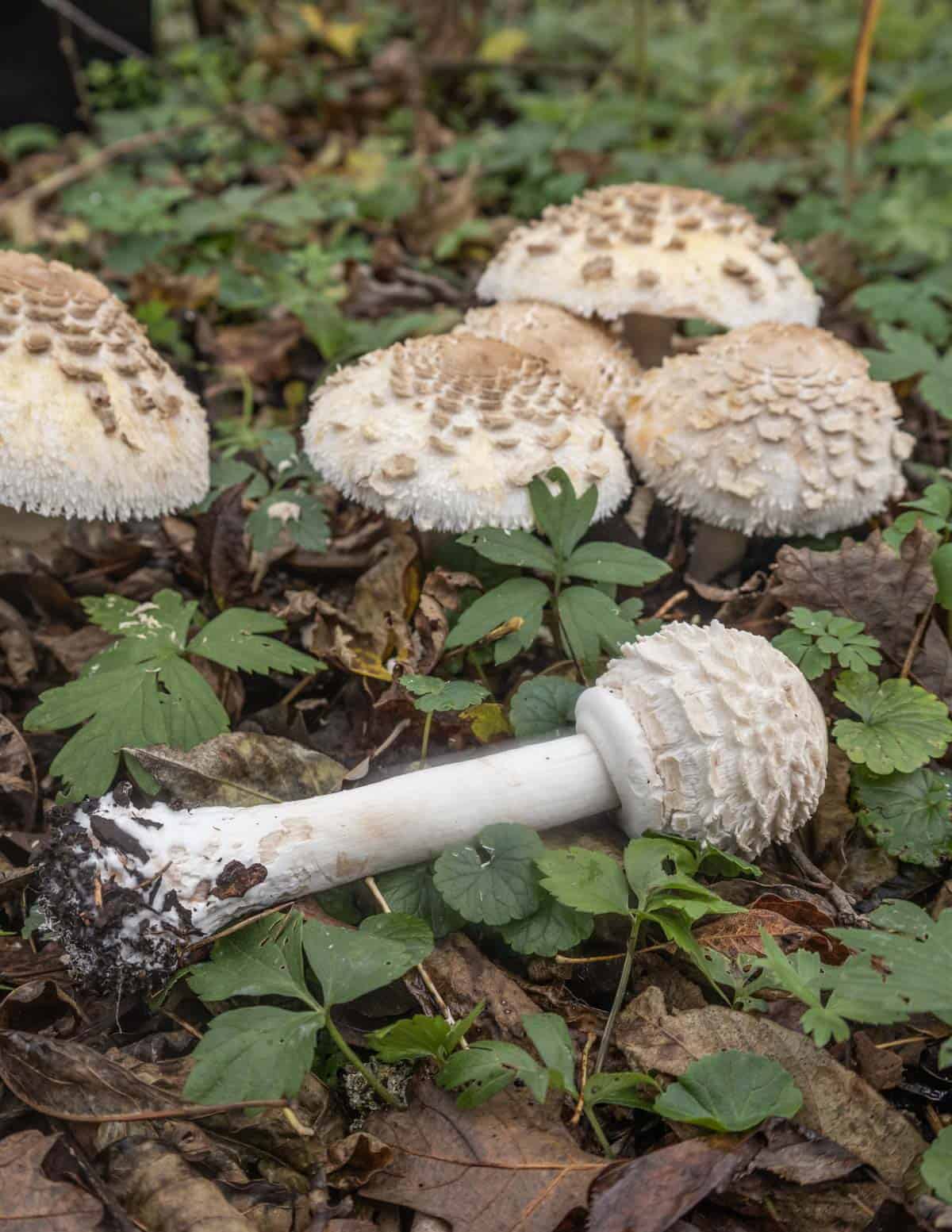
Look a-likes
The tricky part is that parasols have a nasty cousin that's in just about everyone's yard: Chlorophyllum molybdites, formerly known as the green-spored lepiota. Molybdites is the dime-a-dozen, large parasol you see all over the place.
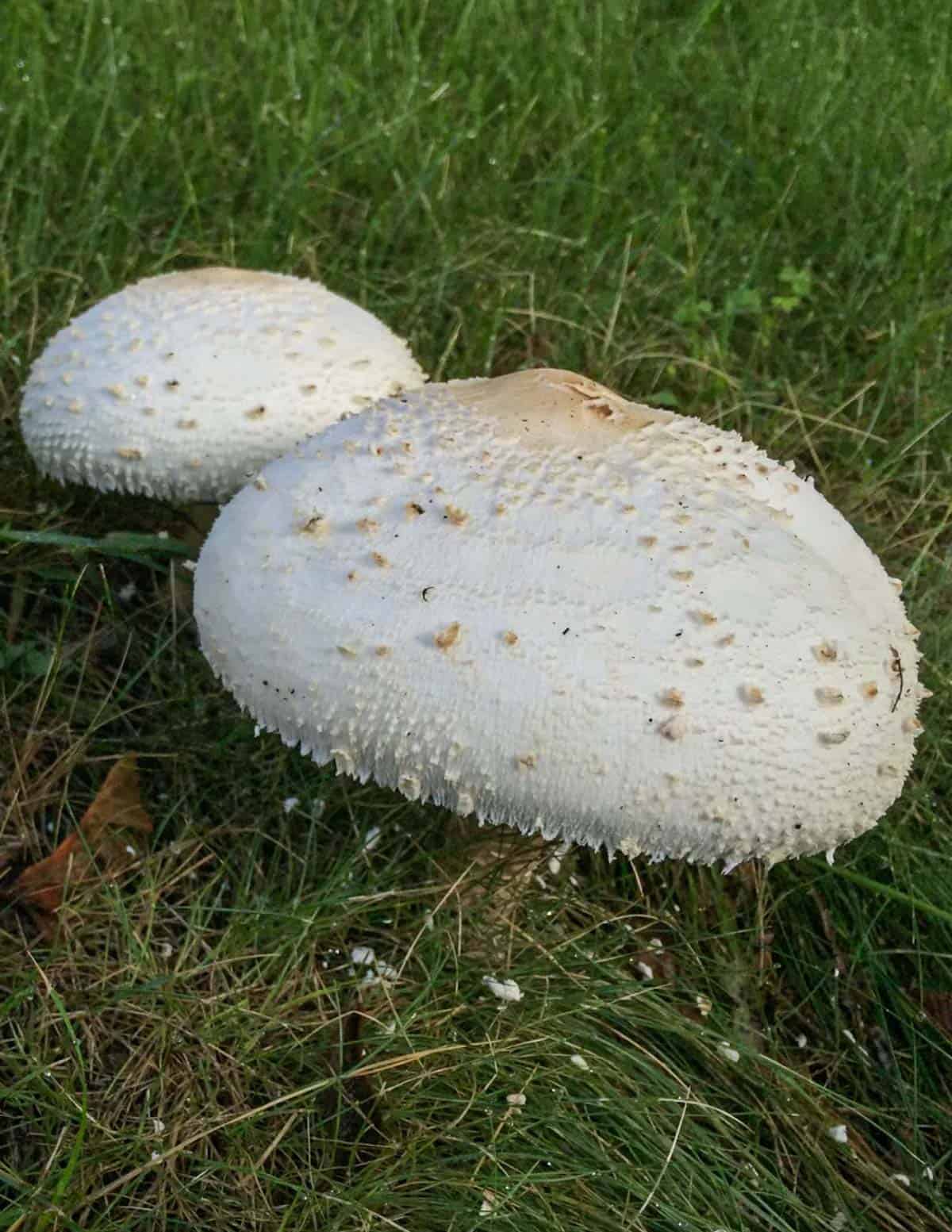

It's pretty much the poster child for online mushroom id questions, since people see them all over the place during mushroom season. One of my line cooks even brought some in this year, after asking the old question: "what is this and can I eat it?". I showed him how to spore print, and that solved that conundrum.
Molybdites is worth being afraid of too, it won't kill you, but It'll make you wish you were dead. Don't worry though, if you do your homework, there is nothing to be scared of. However, these do take a little more work to snuff out than something "easy", like a chicken of the woods, so show'em a little respect-don't throw them into a pan before you know exactly what parasol you have.
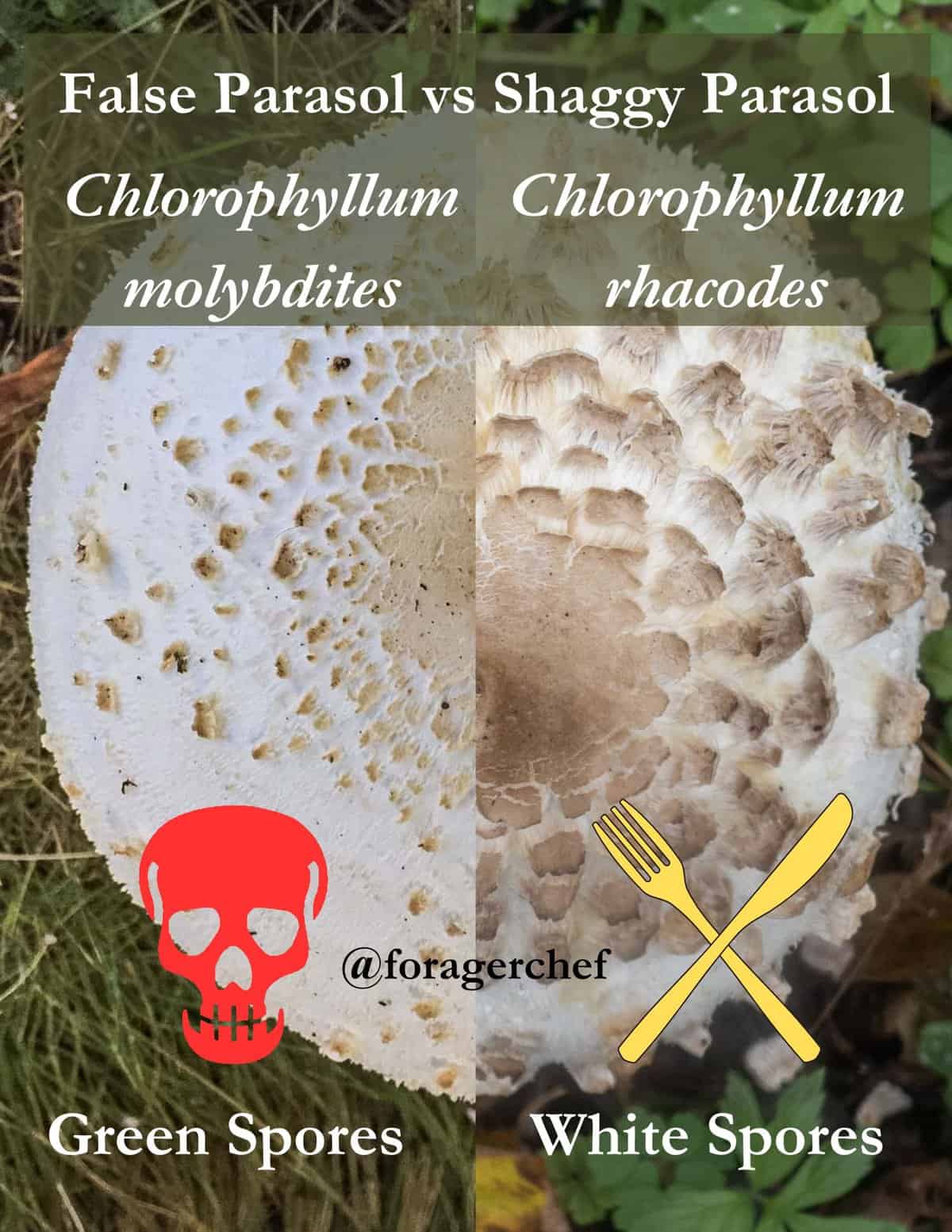
That being said, there is one other edible look alike to mention that I haven't seen personally-Lepiota americana.
Identification
Getting down to business, here's the characteristics of the shaggy parasol that stick out to me the most:
- The most important trait is that these have white spores-molybdites has noticeably green ones. This means you have to collect a few mature mushrooms with opened caps for spore printing to know exactly what you're eating. You need to see the color of their spores.
- Since there are usually varying ages in the same patch, this isn't difficult at all. You can of course look for a "natural" spore print on the top of caps surrounding mature mushrooms too.
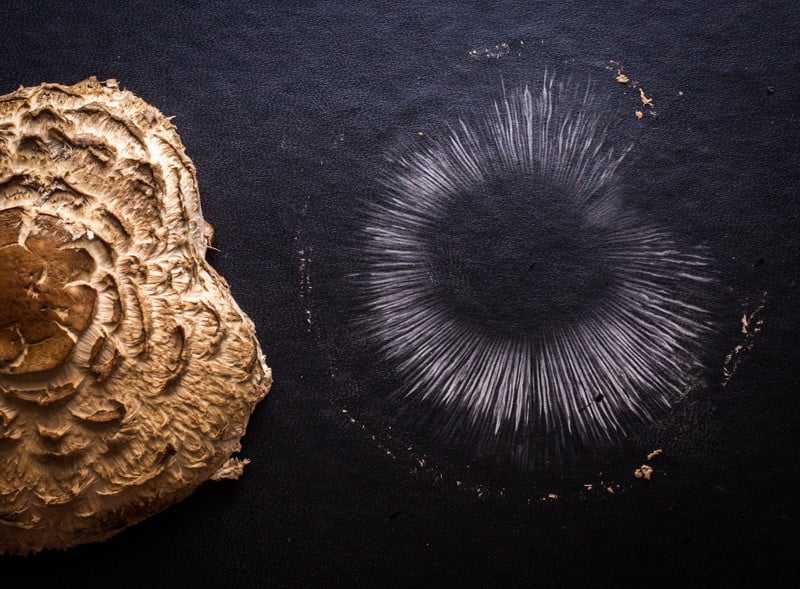
- Mature shaggy parasols will not have a broad, cone-like shape to their cap
- The cap is shaggy, really shaggy, meaning it's covered with little bits of fluff. If you know the difference between a shaggy mane and an alcohol inky, you won't have a problem here. Molybdites doesn't have brown scales as pronounced as our tasty parasol from my experience. Here's a picture of what I mean.
- Young will bruise a saffron color when their stem is sliced, which eventually turns to dark red.
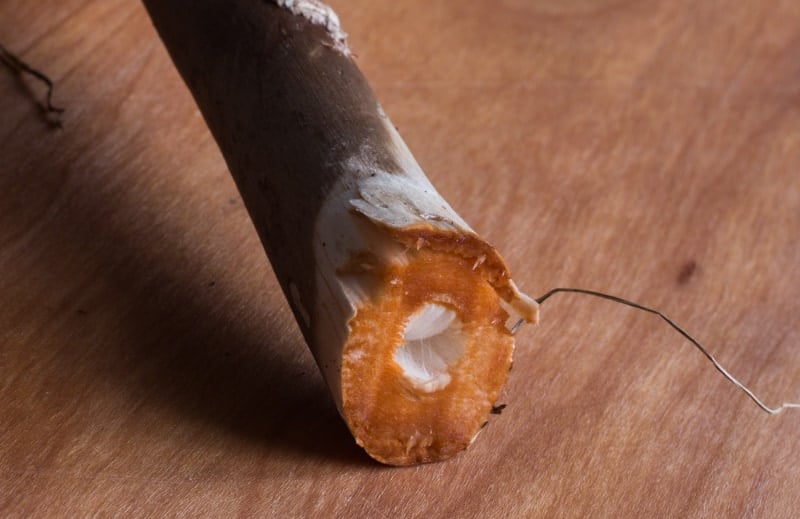
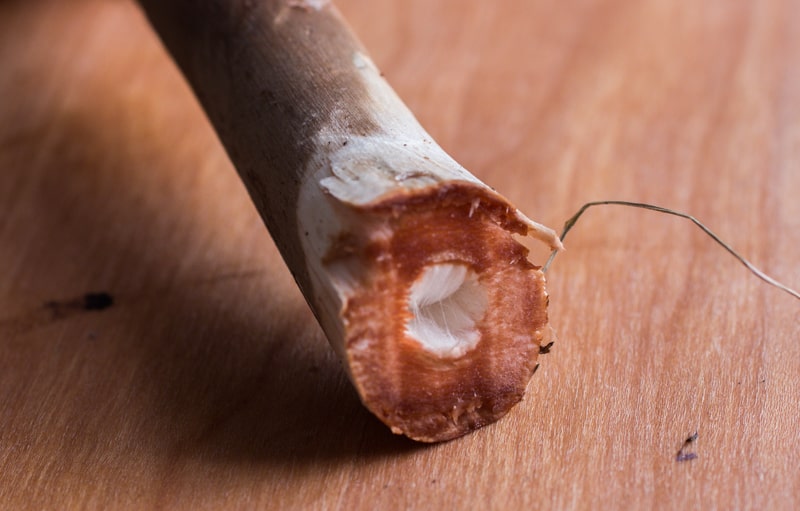
- The bottom of the stem should be a bit bulbous.
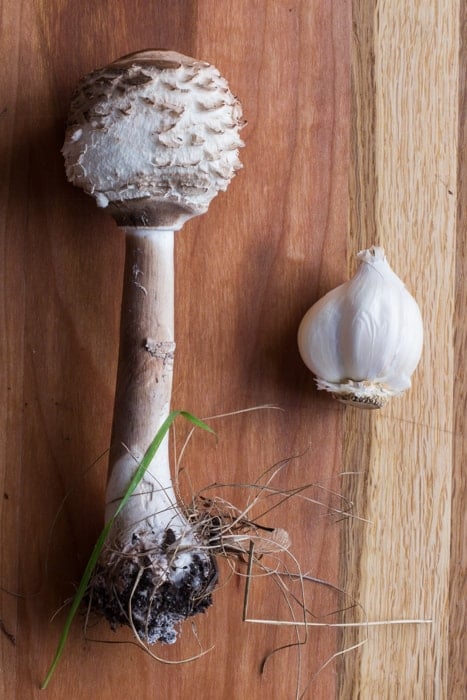
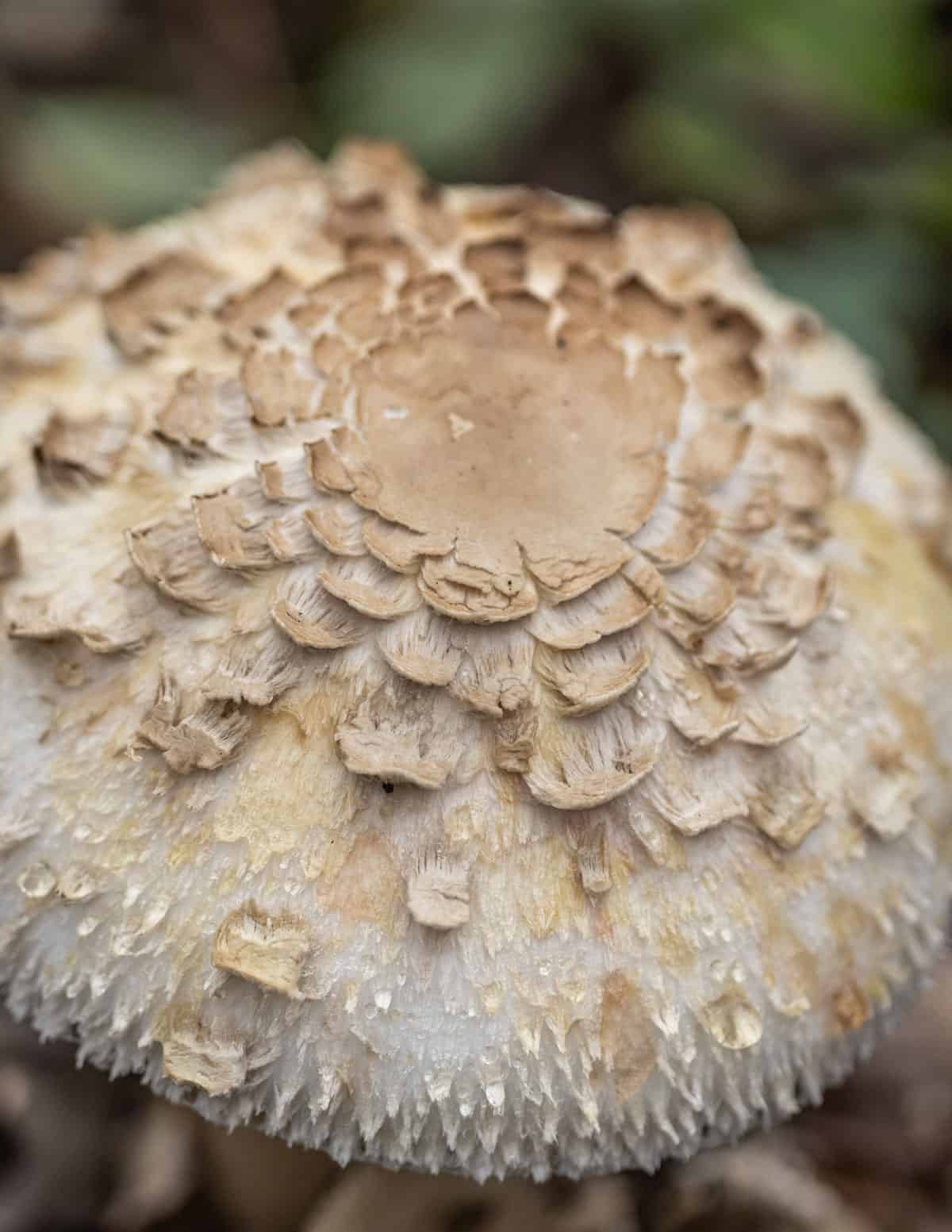
Individual sensitivity/allergy
Unfortunately, even if you come across some of these and they're true shaggy parasols, unfortunately, like morels, lobster mushrooms and chicken of the woods, some people will have allergic reactions to them. Don't be scared, but remember to enjoy small amounts at first to make sure they agree with you.
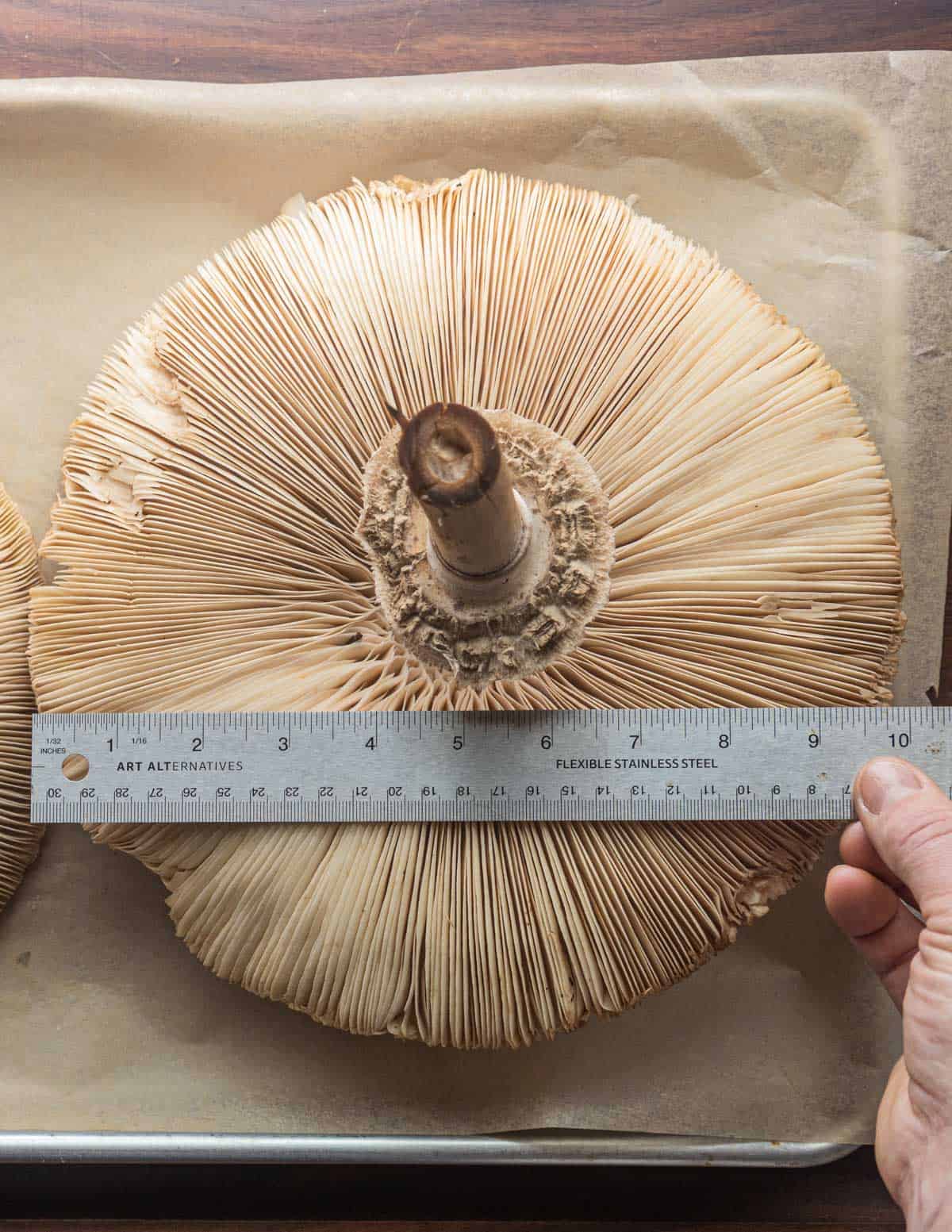
Cooking
They're excellent, and like most shrooms, the younger they are, the better they eat. Their flavor is similar to Agaric species, I've tried, like the meadow mushroom, mild and pleasant, and rich when caramelized-the biggest difference is heir long stem needs a little tlc.
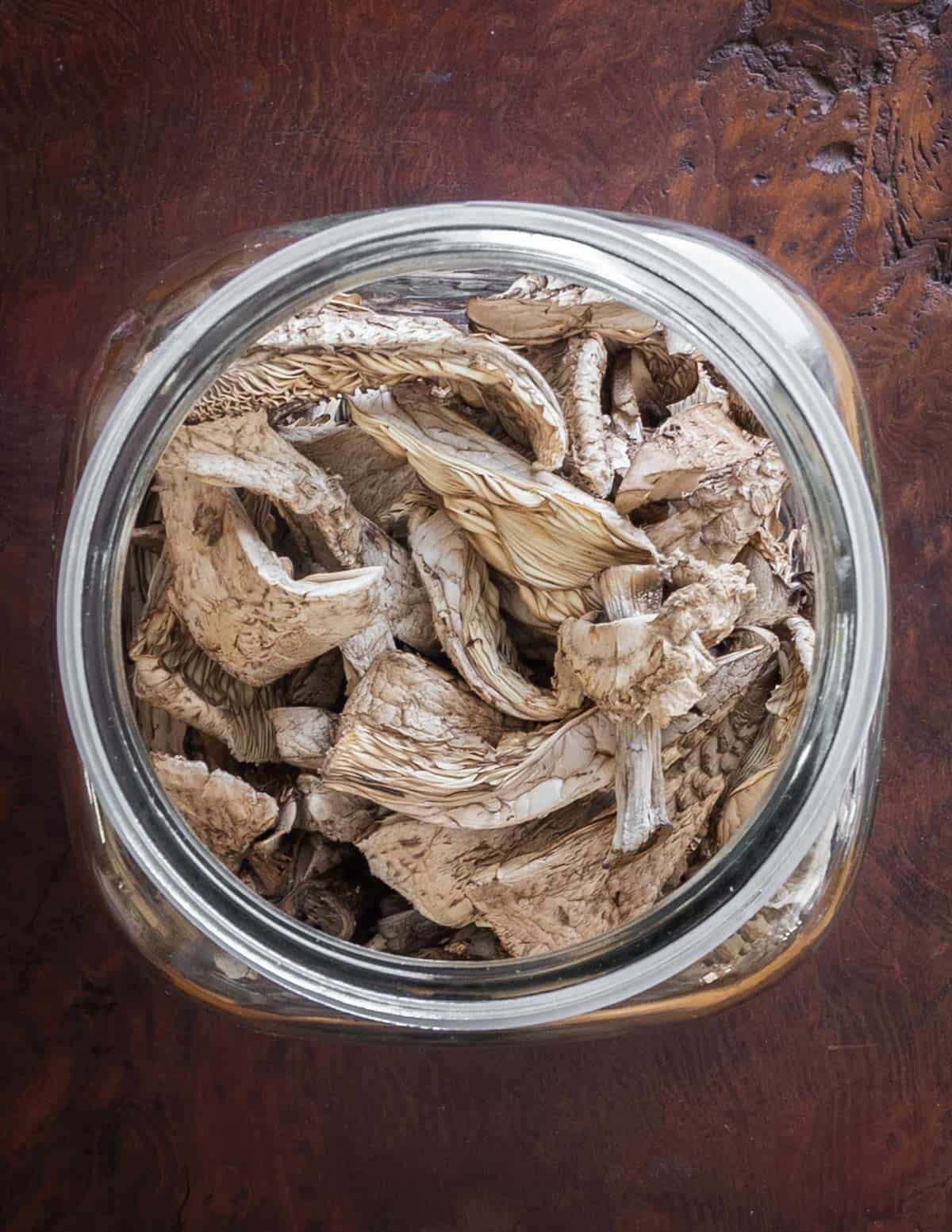
Just like Leccinum species, the stem is tougher than the cap, and requires longer cooking. To get by this you can trim the stem down a few inches, or simply twist the stem off, then dice it, and cook it alongside the caps, or incorporate the cooked stem into a stuffing for the caps, which is traditional.
The stem can also be peeled gently like you might a large honey mushroom, which helps it cook evenly.
More
35 Essential Wild Mushrooms Every Forager Should Know
Italian Fried Shaggy Parasols
Equipment
- 1 10 inch cast iron skillet
Ingredients
- 1 lb shaggy parasol mushrooms harvested before the caps open, brushed clean, stems peeled
- Fresh ground black pepper to taste
- Wedges of lemon to serve, (optional)
- ¼ cup light olive oil or cooking oil, as needed for frying the mushrooms
- ½ tsp kosher salt to taste
- 1 tsp minced garlic
- 1 tbsp fresh sliced mint leaves
- ¼ tsp crushed red pepper flakes
Instructions
- Cut the mushrooms into large pieces. Smaller mushrooms can be halved.
- Heat half the oil in a cast iron skillet or a wide saute pan on medium heat, when it's hot, place the mushrooms in the pan and cook slowly, flipping occasionally.
- If the mushrooms soak up the oil in the pan, add more oil and continue cooking. Take your time, flipping the mushrooms here and there until they're golden brown on both sides. Season with a pinch of salt half way through cooking.
- When the mushrooms are golden brown, push them to the side of the pan and add the garlic. Drag the mushrooms around in the garlic, flipping them to coat with the oil.
- Add the crushed red pepper and mint leaves, stir to combine. Taste a small piece of mushroom to test the flavor, adjust the seasoning for salt until they taste good to you, then serve with lemon wedges as a side dish.



Debbie Viess
Some people cannot eat any Chlorophyllum species, regardless of cooking time. Others seem to be able to eat even C. molybdites, with sufficient cooking. My husband and I both ate the same well cooked Chlorophyllum dish, prepared by a friend (no question about the exact species; the friend who prepared it is a top CA taxonomist!). We both had modest amounts. I enjoyed it, my poor husband hugged that porcelin throne for many hours!
Lots of individual variation in edibility with this genus. It's definitely one to view with caution.
They sure are pretty and distinctive, though!
Alan Bergo
Thanks Debbie. This post is pretty old now and due for an update. This is a good reminder for me to get on that.
Vera
Awesome pics. You've helped me nail it. About to have shaggy magic in Colorado.
Alan Bergo
Hey thanks. Once you know it it’s easy, but this can be a tricky one.
Rena Johnson
Have been collecting and eating these for a number of years here in Western Montana - they are awesome just sauteed in butter, and freeze well (after cooking) in waxed paper in a zip lock. What I don't do: keep them in the refrigerator after cooking. My absolute favorite mushroom!!
Dave Oshana
Has anyone been advised to "pre-boil before cooking"? One Finnish mushroom book recommends boiling *before* cooking "Akansieni", which it classifies as Chlorophyllum Olivieri, whilst a second book classifies as Chlorophyllum Rhacodes. In contrast, English websites and videos advise simply chopping the raw mushroom before frying it. One website even advises against using excessive water when cleaning the Shaggy Parasol, in case the meaty taste is washed away.
Gavin Lyons
Parasols are certainly one my favorites to eat around this time of year here in Austria. Recently I found a use for the stems which might interest you. I'm attempting to make Anthotype photography from the Parasol stems - https://gavinlyons.photography/preparing-mushrooms-for-anthotypes-part-ii/
Btw you also inspired me to try out a spore print too. At some point I hope to make one of those Saffron Milkcup recipes once I find enough fresh samples in our woods.
Natalie Serna
Can I send you a picture of some I picked today growing in the grass where I live?
Alan Bergo
Sure, but don't be expecting me to ID them 100%. Facebook groups are great for posting with ID requests. alanbergo3 AT gmail.com
Iryna
We have collected a large quantity for the first time. We followed all the identification tips and got convinced it was the edible one. We cooked it thou roughly and gave it a try. We ate a little the first time, and we're fine. Then I cooked with them and we were still fine. A week later I still had a lot left, so I decided to cook them all up and had a large portion for dinner. I am sick as a dog now!!! Can the quantity really make you sick?
Alan Bergo
I have never gorged myself on shaggy parasols, but I know David Arora definitely talks about many cases of mushroom "poisoning" being from over-consumption. Sorry to hear, my girlfriend ate a dish I made with lobster mushrooms that was hanging out in her fridge for a few days too long and got very sick last year. I know mushroom gastro-intestinal distress is absolutely horrible, sorry to hear, but I hope you'll be able to hunt more next year, don't let a little sickness deter you from having fun.
Will K.
I’ve never come across Lepiota rachodes here in VA, but I regularly collect and eat L. Americana and Macrolepiota procera (Macrolepiota procera is one of my favorites; the huge caps are awesome stuffed with an Italian sausage-based stuffing). To me, the L. rachodes looks far more likely to be confused with Chlorophyllum molybdites than the other two large Lepiotas, at least visually. Great blog, BTW!
Alan Bergo
Thanks.
nancy elder
p.s. love your site!
nancy elder
If you've never eaten this mushroom, go slow. First time I ate it mixed in with other species and got sick. Couldn't believe it was the Lepiota rachodes (old name) since It was the emblem of the L.A. Mycological Society. So, I ate it again . . .and yes sick again. I've been collecting and eating mushrooms for over 40 years and it's the only common edible I can't eat.